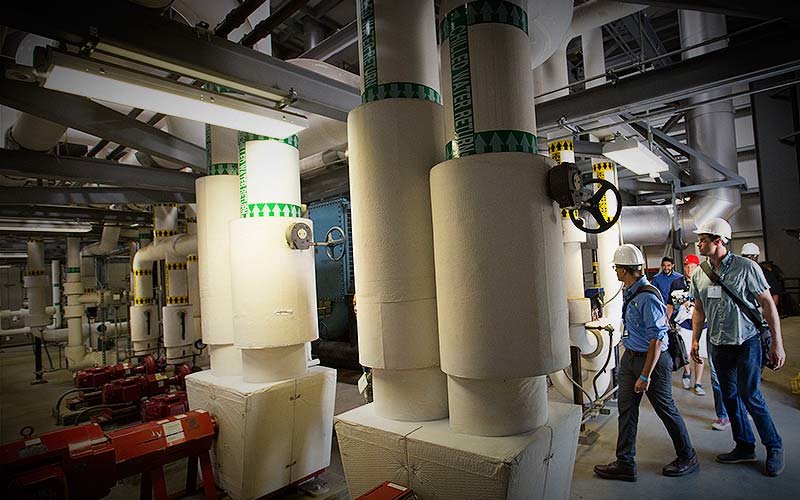
More than 800 representatives and students from colleges and universities across the state converged at Cal State Fullerton this week to take part in the annual California Higher Education Sustainability Conference.
This year’s theme, “Living Laboratory: Turning Ideas Into Action,” was reflected in breakout sessions on sustainability studies, undergraduate research, collaborations and student engagement. Other workshops covered construction projects, local food purchasing, sustainable and renewable energy and water efficiency programs, and even how campuses are responding to student food insecurity.
Attendees also heard from two keynote speakers: A.G. Kawamura, former California secretary of agriculture and owner of Orange County Produce, a family-run producer and shipper of locally grown produce, and Marla Cone, senior editor/environment at National Geographic and author of “Silent Snow: The Slow Poisoning of the Arctic.”
“I think the idea of living laboratories is very welcome, a part of something bigger,” announced Kawamura. “This is a global laboratory that we all work in, experiment in and it’s moving forward. In many cases, some would say that the glass is half empty but I say the glass is so incredibly full of so much potential. The idea of taking ideas to action though … this marks where we are today.”
He alluded to the 17 Sustainable Development Goals adopted during the United Nations Sustainable Development Summit in September 2015, which include goals to end poverty and hunger, tackle climate change, provide clean water to all and ensure responsible consumption and production by 2030.
Kawamura pointed to a black-and-white image from the 1920s-1930s of his uncle guiding a plow being pulled by a mule. He discussed new ways of growing food through hydroponics, repurposing properties and using areas like the land in between closed airport runways. “We’ve come an enormous distance … the idea of leaping forward in 14 years or less — it’s not that much a stretch when you think of how far we’ve come.”
A video of Kawamura’s talk is available online.
President Mildred García welcomed conference attendees and introduced the closing keynote speaker Cone, a former reporter for the Los Angeles Times, as “one of the most notable journalists of our country.”
Cone came to write “Silent Snow,” when she learned that the people of that region have been more exposed to toxins than anywhere else on earth. “How could this be?” she asked and went on to share how pesticides like PCBs and mercury get into the water, which moves to that region and then passes these chemicals along the food chain to the whales and seals eaten by the native people.
Cone also discussed the Paris Climate Agreement, the current drought and coral bleaching.
“I’m sorry this sounds depressing,” she said. “What can we do? After decades spent writing about the environment, I still write about the same problems but there are success stories. There’s campus sustainability, clean energy, green buildings, waste reduction, transportation … All of these show that you are doing your part.”
Hear the complete talk by Marla Cone on Facebook.